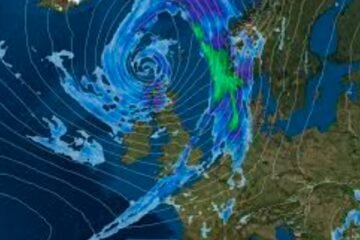Scotland is looking for its next national park, and the process will be entirely driven by local communities and organisations. The Scottish Government has opened the official nominations for areas that have outstanding natural or cultural heritage, a distinctive character or identity, and local support. The aim is to establish at least one new national park by 2026, as part of the cooperation agreement between the SNP and the Scottish Greens.
What are the benefits of a national park?
National parks are areas of land that are designated for the conservation and enhancement of their natural and cultural heritage, while also promoting sustainable use of their resources. They provide opportunities for recreation, tourism, education, and research, as well as contributing to the well-being of local communities and the economy. They also play a crucial role in tackling climate change and protecting biodiversity.
Scotland currently has two national parks: Cairngorms National Park and Loch Lomond and the Trossachs National Park. They were created more than 20 years ago and cover about 8% of Scotland’s land area. They attract over 5 million visitors each year and generate over £500 million for the economy.
How to nominate an area for a national park?
The Scottish Government has published detailed guidance on how to nominate an area for a national park. The guidance sets out the criteria that must be met, such as:

- The area must have outstanding national importance due to its natural or cultural heritage, or both.
- The area must have a distinctive character or coherent identity that is recognised by the people who live in, work in, or visit it.
- The area must have evidence of local support from communities, organisations, businesses, and landowners within and around it.
- The area must have potential to deliver the four aims of a national park: to conserve and enhance the natural and cultural heritage; to promote sustainable use of the natural resources; to promote understanding and enjoyment of the special qualities; and to foster social and economic development of communities.
The deadline for submissions is February 29, 2024. All nominations will be appraised against the criteria by NatureScot, the public body responsible for advising the Scottish Government on nature and landscape issues. NatureScot will then carry out a detailed investigation into the area or areas selected to become a new national park.
Which areas have expressed interest in becoming a national park?
So far, ten areas have said they would be interested in becoming Scotland’s next national park. They are:
- Argyll Islands
- Ben Nevis/Glen Coe/Black Mount
- Coigach-Assynt
- Dornoch Firth
- Galloway
- Harris
- Mull
- North Uist
- Wester Ross
- Westray
These areas have diverse landscapes, wildlife, history, and culture. They range from mountain ranges and lochs to islands and coasts. They also face various challenges and opportunities, such as depopulation, land use change, climate change, tourism development, and community empowerment.
What are the challenges and controversies of creating a new national park?
Creating a new national park is not an easy task. It requires careful planning, consultation, legislation, and governance. It also involves balancing different interests and expectations of various stakeholders, such as landowners, residents, visitors, businesses, environmental groups, and public authorities.
Some of the challenges and controversies that may arise include:
- The cost and funding of establishing and managing a new national park.
- The impact of a new national park on land ownership, access rights, planning controls, and economic activities.
- The representation and participation of local communities in decision-making processes.
- The potential conflicts between conservation and development objectives.
- The compatibility of a new national park with existing designations, such as Sites of Special Scientific Interest (SSSIs), Special Areas of Conservation (SACs), or National Scenic Areas (NSAs).
How will a new national park contribute to Scotland’s green recovery?
A new national park could be an opportunity to support Scotland’s green recovery from the Covid-19 pandemic. A green recovery is a strategy that aims to rebuild the economy in a way that is environmentally sustainable, socially inclusive, and resilient to future shocks.
A new national park could contribute to Scotland’s green recovery by:
- Enhancing the natural capital and ecosystem services that underpin human well-being and livelihoods.
- Creating jobs and income opportunities in sectors such as tourism, recreation, forestry, agriculture, renewable energy, and education.
- Promoting health and well-being through outdoor activities, nature connection, and community engagement.
- Addressing climate change and biodiversity loss through nature-based solutions such as restoration, adaptation, mitigation, and innovation.
- Inspiring people to value and protect nature for its own sake and for future generations.
What will happen next?
The Scottish Government hopes to introduce legislation to create a new national park by 2026. However, this will depend on the outcome of the nominations process, the investigation by NatureScot, and the approval by the Scottish Parliament.
The creation of a new national park will be a historic moment for Scotland and a significant achievement for the communities and organisations involved. It will also be a challenge and a responsibility to ensure that the new national park delivers its aims and benefits for nature and people.
Will Scotland succeed in creating its next national park? Will it be one of the ten areas that have expressed interest, or a different one? Will it meet the expectations and aspirations of all stakeholders? Only time will tell.


















